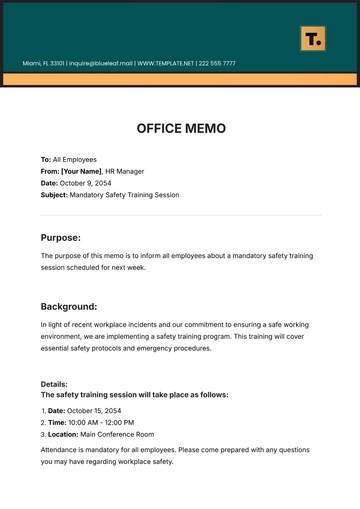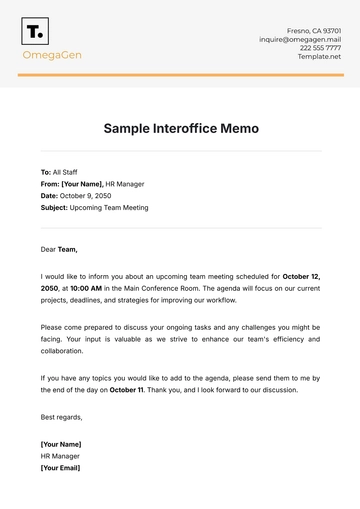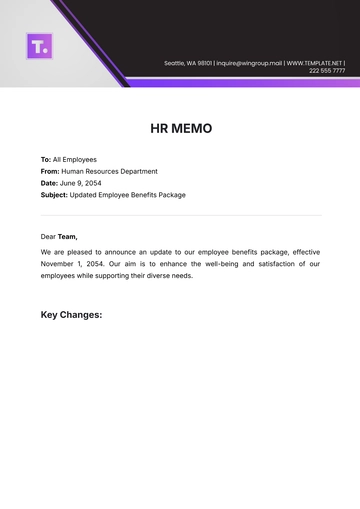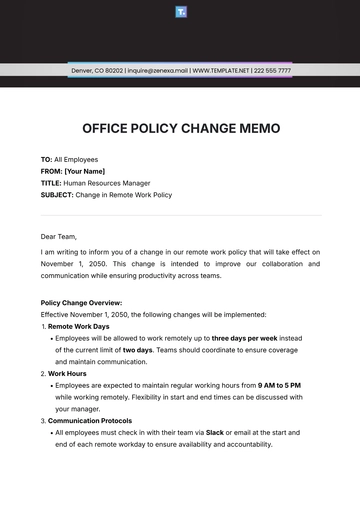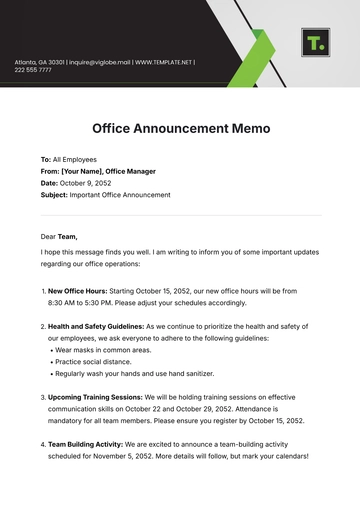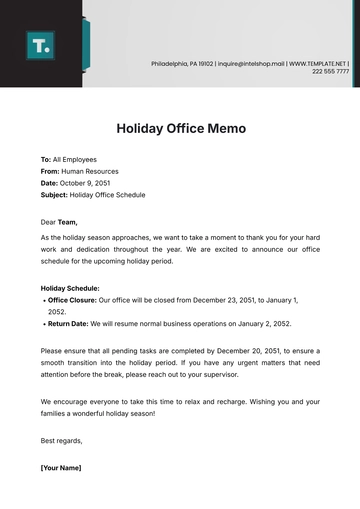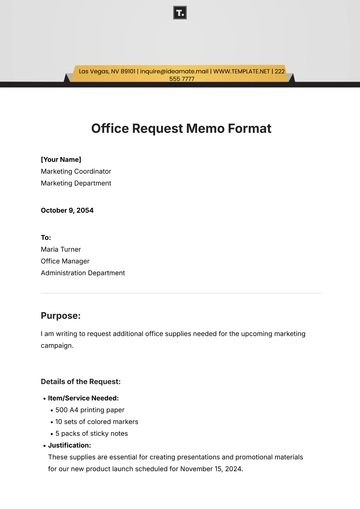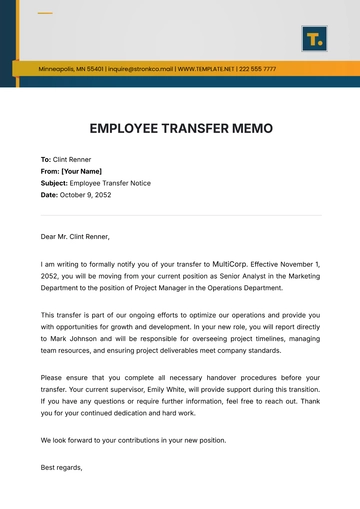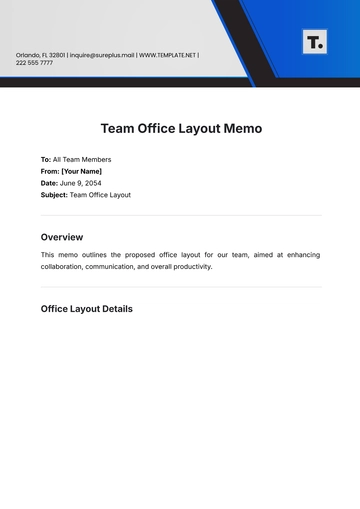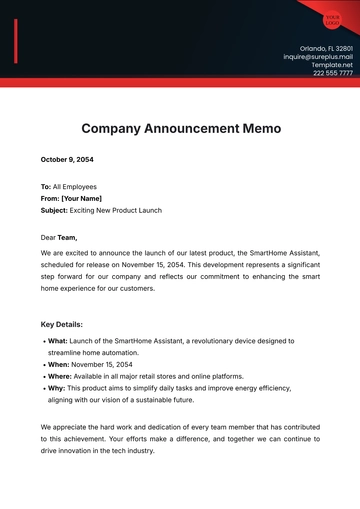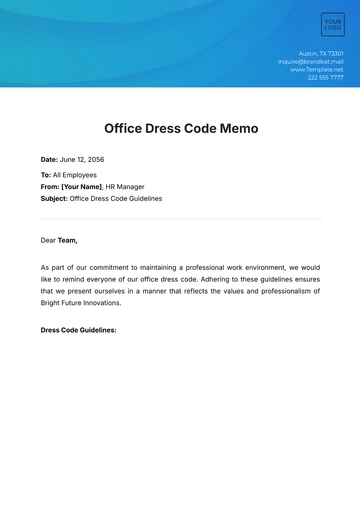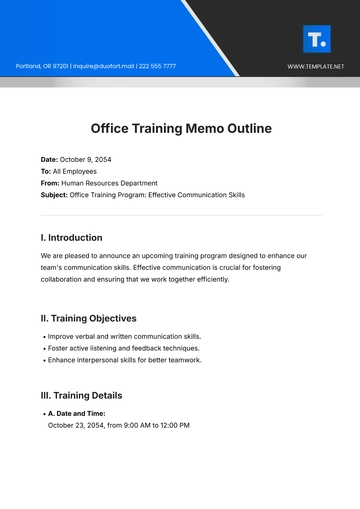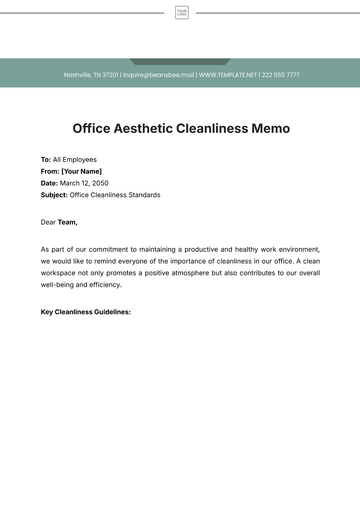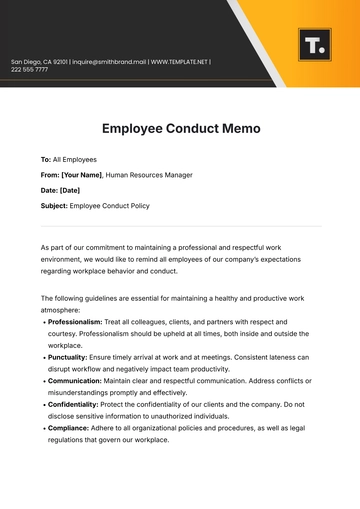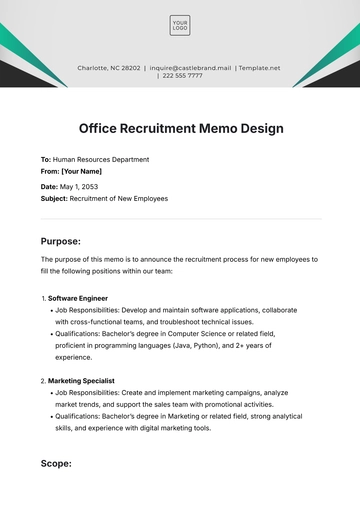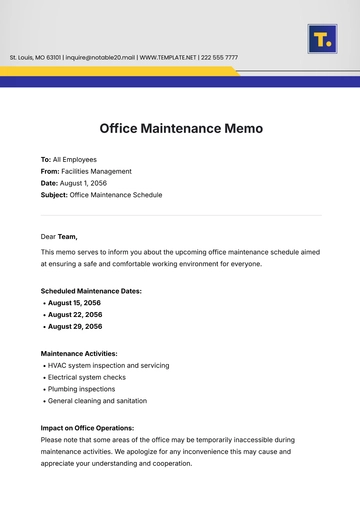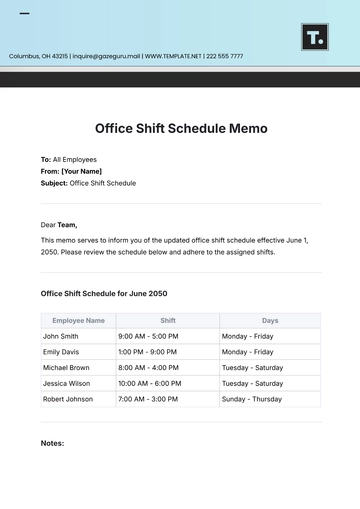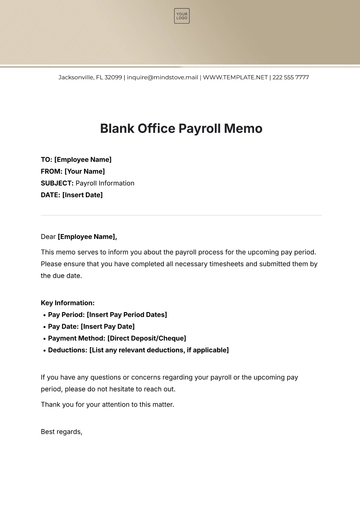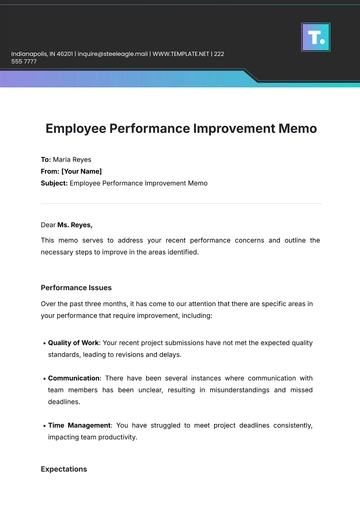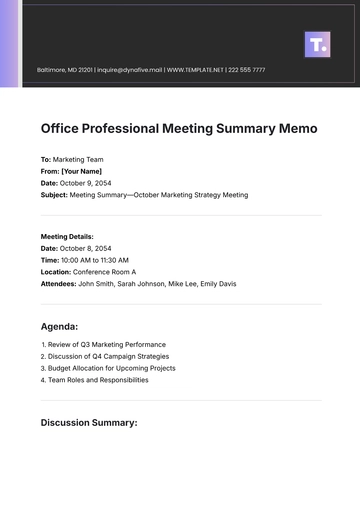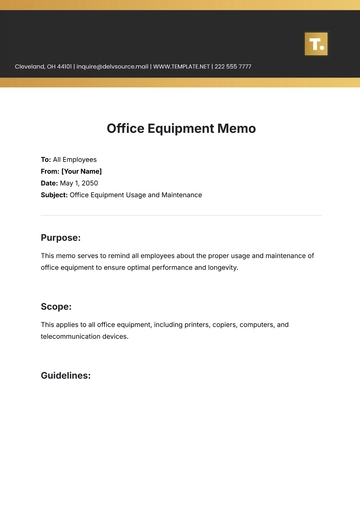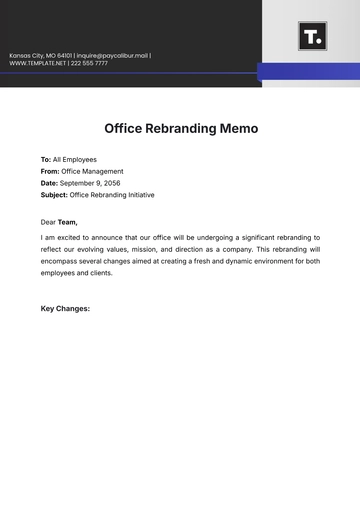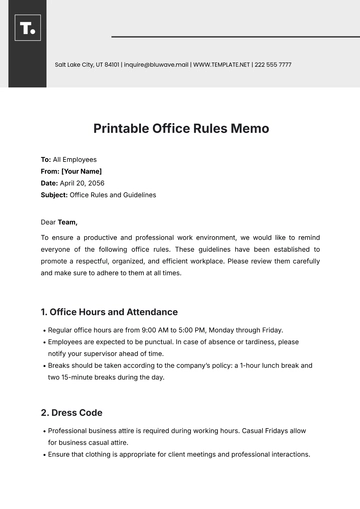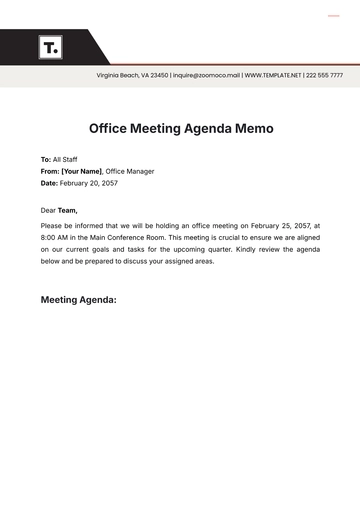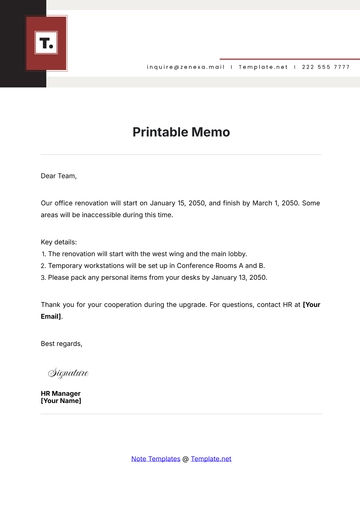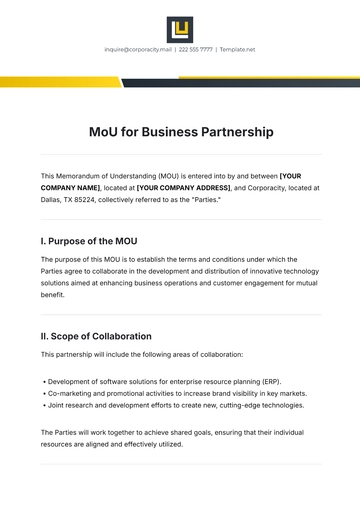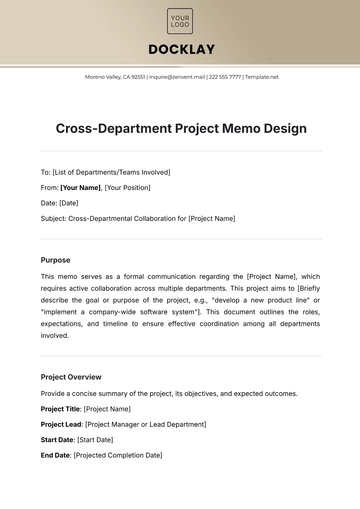Free Church Emergency Memo Outline
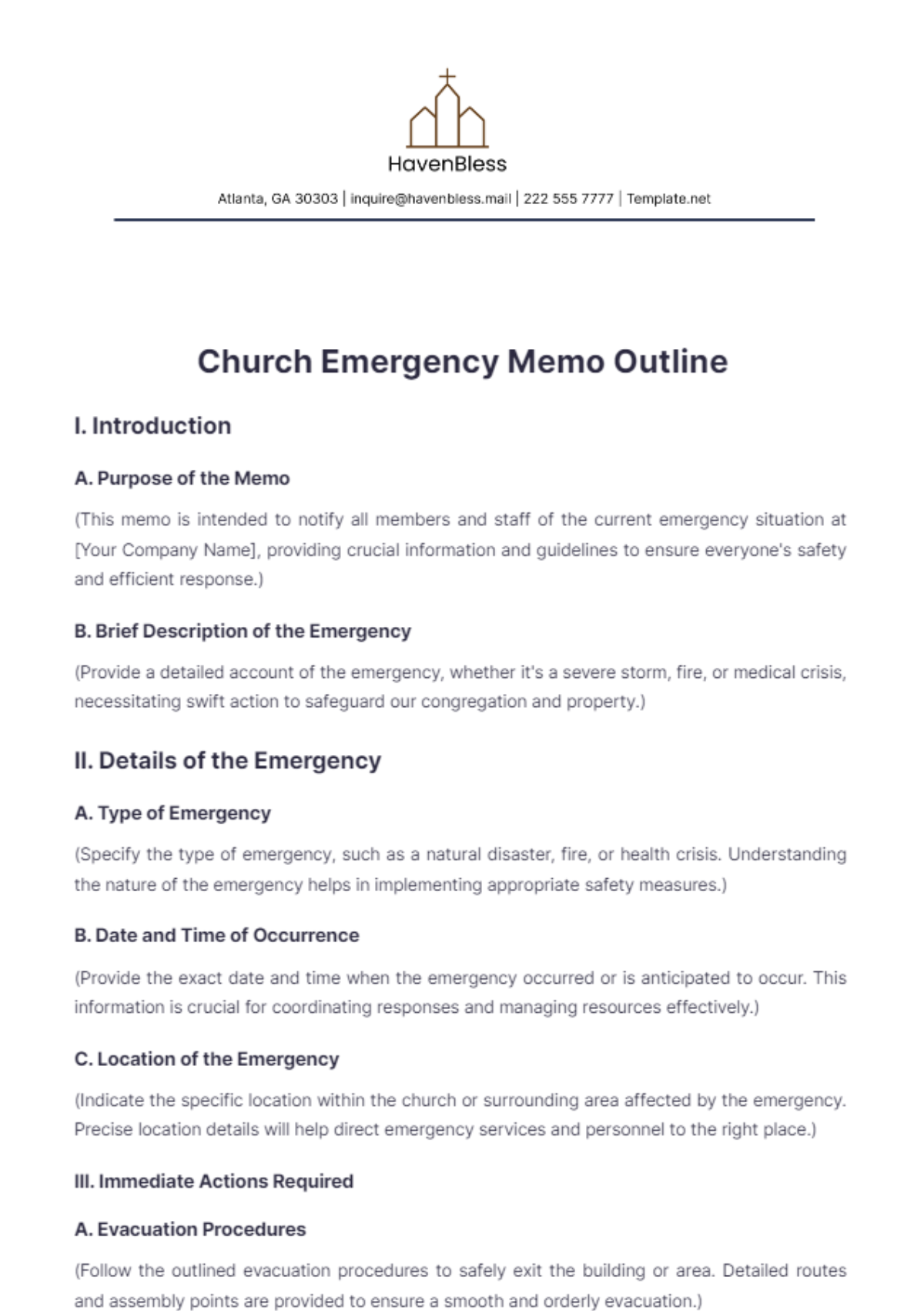
I. Introduction
A. Purpose of the Memo
(This memo is intended to notify all members and staff of the current emergency situation at [Your Company Name], providing crucial information and guidelines to ensure everyone's safety and efficient response.)
B. Brief Description of the Emergency
(Provide a detailed account of the emergency, whether it's a severe storm, fire, or medical crisis, necessitating swift action to safeguard our congregation and property.)
II. Details of the Emergency
A. Type of Emergency
(Specify the type of emergency, such as a natural disaster, fire, or health crisis. Understanding the nature of the emergency helps in implementing appropriate safety measures.)
B. Date and Time of Occurrence
(Provide the exact date and time when the emergency occurred or is anticipated to occur. This information is crucial for coordinating responses and managing resources effectively.)
C. Location of the Emergency
(Indicate the specific location within the church or surrounding area affected by the emergency. Precise location details will help direct emergency services and personnel to the right place.)
III. Immediate Actions Required
A. Evacuation Procedures
(Follow the outlined evacuation procedures to safely exit the building or area. Detailed routes and assembly points are provided to ensure a smooth and orderly evacuation.)
B. Safety Instructions
(Adhere to the safety instructions to minimize risk and ensure personal safety. These instructions include guidelines on avoiding hazardous areas and protecting oneself during the emergency.)
C. First Aid and Medical Assistance
(Apply basic first aid measures and seek medical assistance for anyone injured or in distress. Medical teams will be on standby to provide additional support and treatment as needed.)
D. Shelter Information
(If evacuation is not possible, proceed to the designated shelter areas within the church. These shelters are equipped to provide temporary safety and comfort until the situation stabilizes.)
IV. Communication Plan
A. Primary Contact Person(s)
(Provide the names of contacts for guidance and updates about the emergency. These individuals are in charge of coordinating the response and addressing any urgent issues.)
B. Emergency Contact Numbers
(Provide emergency contact numbers for urgent communication, ensuring they connect you with key personnel and emergency services.)
C. Communication Channels
(Updates will be shared via phone, email, or social media to keep everyone informed about the current status and any new developments regularly.)
V. Support and Resources
A. Local Emergency Services
(For prompt help and action, local emergency services are available; their contact details are supplied to ensure quick support and coordination.)
B. Church Support Services
(Provide information about available support services, including counseling and temporary shelter. These resources are available to help members cope with the emergency and its aftermath.)
C. Volunteer Coordination
(Volunteers will be organized to assist with emergency response and recovery efforts. Identify a point of contact who will manage coordination to ensure successful implementation.)
VI. Follow-Up Actions
A. Reporting Procedures
(Report the status of the emergency and any observed issues to the designated contact person. Timely reporting helps in assessing the situation and adjusting response strategies.)
B. Future Updates and Meetings
(Future updates and meetings will be scheduled to review the situation and discuss next steps. Ensure you attend these meetings to stay informed and contribute to the recovery plan.)
C. Restoration and Recovery Plans
(The restoration and recovery plan will be implemented to address damage and return to normal operations. This includes repairing any damage and providing support to those affected by the emergency.)
- 100% Customizable, free editor
- Access 1 Million+ Templates, photo’s & graphics
- Download or share as a template
- Click and replace photos, graphics, text, backgrounds
- Resize, crop, AI write & more
- Access advanced editor
Ensure your church is prepared with the Church Emergency Memo Outline Template from Template.net. This editable and customizable template simplifies emergency communication, allowing you to quickly tailor the content to any situation. With the integrated AI Editor Tool, effortlessly update and manage your memo to keep your congregation informed and safe during emergencies.
